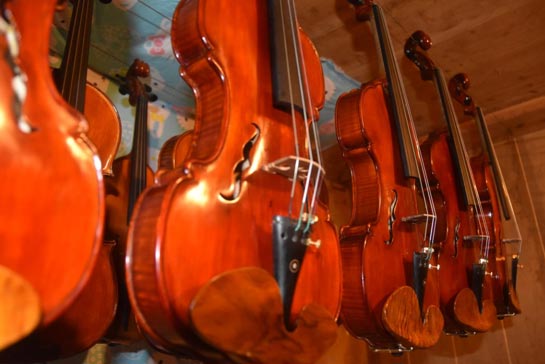..
Plucky craftsman produces the perfect violin
Updated: 2017-09-25
By Sun Hui, chinadaily.com.cn
 |
|
He's San-yuan violins can play bass, alto and treble ranges. [Photo provided to chinadaily.com.cn] |
The violin is made using Paulownia wood and consists of three round ribs of differing thickness. The thickest rib is reduced on the side with the lower register, which gives it a powerful and clear tone. The violins have a tonal sophistication comparable to that of old European masterpieces.
To add an extra Chinese touch to his work, He carves a ruyi (a traditional Chinese symbol of good luck and blessing), on the headstock of each violin.
In the course of his trials and errors in creating the San-yuan violin, He became a master of wood science, geological geomorphology, meteorology and humanities.
"Wood is the key to making a good violin," He says.
The carpenter explored many old-growth forests in China, Myanmar and India to find a wood capable of competing against spruce – the European wood traditionally used to make violins for hundreds of years.
He finally settled on Chinese Paulownia wood due to its similarities with spruce. To give the wood that extra edge, He stored it in a wine cellar so that the atmosphere and microorganisms would change the properties of the timber, altering its stress and improving its quality. This process alone drew international attention.
As a result, some of the world's leading violinists, including Gidon Kremer, have played San-yuan violins, Gidon referring to it as the "Eastern Venus".
Despite receiving calls to put the process and violin into streamlined mass production, He refused, preferring to personally oversee the production of each violin using the 178 individual processes needed.
Video

UK trade commissioner for China praised Chongqing as a burgeoning center in intelligent manufacturing.





